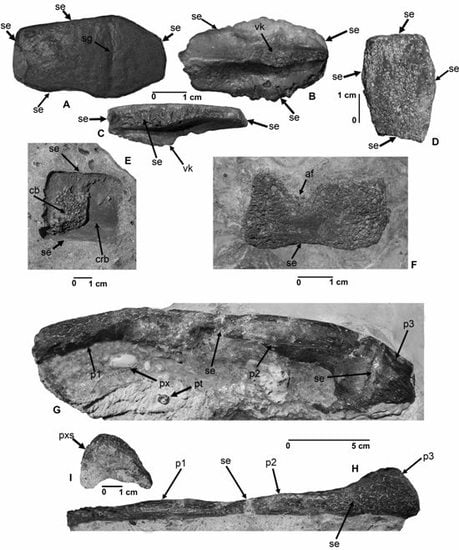Turtles From an Arkadelphia Formation—Midway Group Lag Deposit (Maastrichtian—Paleocene), Hot Spring County, Arkansas, USA
Abstract
:1. Introduction
2. Age of the Arkadelphia Formation—Midway Group Contact
3. Geologic Setting
4. Field Methods
5. Repository
6. Turtle Assemblage
7. Discussion
7.1. Origin of the Turtle Lag Deposit
7.2. Impact Generated Tsunamis for Lag Deposit Formation
7.3. Third Order Sea Level Generated Lag Deposits
7.4. Combined Impact Generated Tsunamis and Third Order Sea Level Cyclicity
8. Future Research
Acknowledgments
Author Contributions
Conflicts of Interest
References
- Schmidt, K. A new turtle of the Genus Podocnemis from the Cretaceous of Arkansas. Field Mus. Nat. Hist. Geol. Ser. 1940, 8, 1–12. [Google Scholar]
- Schmidt, K. Two new Thalassemyd turtles from the Cretaceous of Arkansas. Field Mus. Nat. Hist. Geol. Ser. 1944, 8, 63–74. [Google Scholar]
- Becker, M.; Chamberlain, J., Jr.; Wolf, G. Chondrichthyans from the Arkadelphia Formation (Upper Cretaceous: Upper Maastrichtian) of Hot Spring County, Arkansas. J. Paleontol. 2006, 80, 700–716. [Google Scholar] [CrossRef]
- Becker, M.; Mallery, C., Jr.; Chamberlain, J., Jr. Osteichthyans from an Arkadelphia Formation—Midway Group lag deposit (Late Maastrichtian—Paleocene), Hot Spring County, Arkansas, U.S.A. J. Vertebr. Paleontol. 2010, 30, 1019–1036. [Google Scholar] [CrossRef]
- Becker, M.; Maisch, H., IV; Chamberlain, J., Jr. Plesiosaurian remains from the Arkadelphia Formation—Midway Group contact (Maastrichtian—Paleocene) Hot Spring County, near Malvern, Arkansas, U.S.A. Paludicola 2013, 9, 131–143. [Google Scholar]
- Cushman, J. The foraminiferal fauna of the Upper Cretaceous Arkadelphia marl of Arkansas. U.S. Geol. Surv. Prof. Pap. 1949, 221, 1–19. [Google Scholar]
- Larina, E.; Garb, M.; Landman, N.; Dastas, N.; Thibault, N.; Edwards, L.; Phillips, G.; Rovelli, R.; Myers, C.; Naujokaityte, J. Upper Maastrichtian ammonite biostratigraphy of the Gulf Coastal Plain (Mississippi Embayment, southern USA). Cretac. Res. 2016, 60, 128–151. [Google Scholar] [CrossRef]
- Jones, E. Palynology of the Midway-Wilcox boundary in south-central Arkansas. Gulf Coast Assoc. Geol. Soc. Trans. 1962, 12, 285–294. [Google Scholar]
- Dastas, N.; Chamberlain, J., Jr.; Becker, M. Palynomorphs of the Arkadelphia Formation and Midway Group transition (Maastrichtian-Danian), Hot Spring County, Arkansas. Geol. Soc. Am. Abstr. Programs 2010, 42, 185. [Google Scholar]
- Pitakpaivan, K.; Hazel, J. Ostracods and chronostratigraphic position of the Upper Cretaceous Arkadelphia Formation of Arkansas. J. Paleontol. 1994, 68, 111–122. [Google Scholar] [CrossRef]
- Becker, M.; Smith, L.; Chamberlain, J., Jr. Chondrichthyans from the Clayton Limestone unit of the Midway Group (Paleogene: Paleocene) of Hot Spring County, Arkansas. Cainozoic Res. 2011, 8, 1–15. [Google Scholar]
- Becker, M.; Chamberlain, J., Jr. Osteichthyans from the Paleocene Clayton Limestone of the Midway Group, Hot Spring County, Arkansas, U.S.A.: Bony fish evolution across the Cretaceous-Paleogene boundary. Paludicola 2012, 4, 194–207. [Google Scholar]
- Liddicoat, J.; Hazel, J.; Brouwers, E. Magnetostratigraphy of Upper Cretaceous deposits in southwestern Arkansas and northeastern Texas. AAPG Bull. 1981, 65, 764–765. [Google Scholar]
- Haley, B.; Glick, E.; Bush, W.; Clardy, B.; Stone, C.; Woodward, M.; Zachry, D. Geologic Map of Arkansas. 1:500,000 Scale, 1 Sheet; Arkansas Geologic Commission: Little Rock, AR, USA, 1993. [Google Scholar]
- Haley, B.; Stone, C.; Clardy, B.; Hanson, W. Geologic Map of the Arkadelphia, Quadrangle, Clark, Garland, Hempstead, Hot Spring, Howard, Montgomery, Pike, and Polk Counties, Arkansas. 1:100,000 Scale, DGM-AR-01100; Arkansas Geologic Commission: Little Rock, AR, USA, 2009. [Google Scholar]
- McFarland, J. Stratigraphic Summary of Arkansas; Information Circular; Arkansas Geological Commission: Little Rock, AR, USA, 2004; Volume 36, p. 44. [Google Scholar]
- Sloan, J.; Arkansas Highway and Transportation Department, Fayetteville, AR, USA. Personal communication, 2015.
- Ernst, C.; Barbour, R. Turtles of the World; Smithsonian Institution Press: Washington, DC, USA, 1989; p. 313. [Google Scholar]
- Hirayama, R.; Brinkman, D.; Danilov, I. Distribution and biogeography of non marine Cretaceous turtles. Russ. J. Herpetol. 2000, 7, 181–198. [Google Scholar]
- Holroyd, P.; Hutchison, J. Patterns of geographic variation in latest Cretaceous vertebrates: Evidence from the turtle component. Geol. Soc. Am. Spec. Pap. 2002, 361, 177–190. [Google Scholar]
- Hutchison, J.; Holroyd, P. Late Cretaceous and early Paleocene turtles of the Denver Basin, Colorado. Rocky Mt. Geol. 2003, 38, 121–142. [Google Scholar] [CrossRef]
- Brinkman, D.B.; Rodriguez-de la Rosa, R.A. Non-marine turtles from the Cerro Del Pueblo Formation (Campanian), Coahuila State, Mexico. N. M. Mus. Nat. Hist. Sci. Bull. 2006, 35, 229–233. [Google Scholar]
- Jalil, N.; de Broin, F.; Bardet, N.; Vacant, R.; Bouya, B.; Amaghzaz, M.; Meslouh, S. Euclastes acutirostris, a new species of littoral turtle (Cryptodira, Cheloniidae) from the Palaeocene phosphates of Morocco (Oulad Abdoun Basin, Danian-Thanetian). C. R. Palevol 2009, 8, 447–459. [Google Scholar] [CrossRef]
- Brinkman, D.; Holroyd, P.; Gardner, J. Morphology and Evolution of Turtles; Springer Science and Business Media: Dordrecht, The Netherlands, 2012; p. 577. [Google Scholar]
- Bourgeois, J.; Hansen, T.; Wiberg, P.; Kauffman, E. A tsunami deposit at the Cretaceous-Tertiary boundary in Texas. Science 1988, 241, 567–570. [Google Scholar] [CrossRef] [PubMed]
- Pitakpaivan, K.; Byerly, G.; Hazel, J. Pseudomorphs of impact spherules from a Cretaceous-Tertiary boundary section at Shell Creek, Alabama. Earth Planet. Sci. Lett. 1994, 124, 49–56. [Google Scholar] [CrossRef]
- Olsson, R.; Liu, C.; van Fossen, M. The Cretaceous-Tertiary catastrophic event at Millers Ferry, Alabama. In The Cretaceous–Tertiary Boundary Event and Other Catastrophes in Earth History; Ryder, G., Fastovsky, D., Gartner, S., Eds.; Special Paper 307; Geological Society of America: Boulder, CO, USA, 1996; pp. 263–277. [Google Scholar]
- Smit, J.; Alvarez, W.; Montanari, A.; Claeys, P.; Grajales-Nishimura, J. Coarse-grained, clastic sandstone complex at the K/T boundary around the Gulf of Mexico: Deposition by tsunami waves induced by the Chicxulub impact? In The Cretaceous–Tertiary Boundary Event and Other Catastrophes in Earth History; Ryder, G., Fastovsky, D., Gartner, S., Eds.; Special Paper 307; Geological Society of America: Boulder, CO, USA, 1996; pp. 151–182. [Google Scholar]
- Lawton, T.; Shipley, K.; Aschoff, J.; Giles, K.; Vega, F. Basinward transport of Chicxulub ejecta by tsunami-induced backflow, La Popa basin, northeastern Mexico, and its implications for distribution of impact-related deposits flanking the Gulf of Mexico. Geology 2005, 33, 81–84. [Google Scholar] [CrossRef]
- Schulte, P.; Speijer, R.; Mai, H.; Kontny, A. The Cretaceous–Paleogene (K–P) boundary at Brazos, Texas: Sequence stratigraphy, depositional events and the Chicxulub impact. Sediment. Geol. 2006, 184, 77–109. [Google Scholar] [CrossRef]
- Campbell, C.; Oboh-Ikuenobe, F.; Eifert, T. Megatsunami Deposit in Cretaceous Paleogene Boundary Interval of Southeastern Missouri. Geol. Soc. Am. Spec. Pap. 2008, 437, 189–198. [Google Scholar]
- Miller, K.; Sherrell, R.; Browning, J.; Field, M.; Gallagher, W.; Olsson, R.; Sugarman, P.; Tuorto, S.; Wahyudi, H. Relationship between mass extinction and iridium across the Cretaceous—Paleogene boundary in New Jersey. Geology 2010, 38, 867–870. [Google Scholar] [CrossRef]
- Oboh-Ikuenobe, F.; Spencer, M.; Campbell, C.; Haselwander, R. A portrait of Late Maastrichtian and Paleocene palynoflora and paleoenvironment in the northern Mississippi Embayment, southeastern Missouri. Palynology 2012, 36, 63–79. [Google Scholar] [CrossRef]
- Case, G.; Schwimmer, D. Late Cretaceous fish from the Blufftown Formation (Campanian) in western Georgia. J. Paleontol. 1988, 62, 290–301. [Google Scholar] [CrossRef]
- Eaton, J.; Kirkland, J.; Kentaro, D. Evidence of reworked Cretaceous fossils and their bearing on the existence of Tertiary dinosaurs. Palaios 1989, 4, 281–286. [Google Scholar] [CrossRef]
- Ward, D.; Wiest, R. A checklist of Paleocene and Eocene sharks and rays (Chondrichthyes) from the Pamunkey Group, Maryland and Virginia, USA. Tert. Res. 1990, 12, 81–88. [Google Scholar]
- Kidwell, S. Influence of subsidence on the anatomy of marine siliciclastic sequences and on the distribution of shell and bone beds. J. Geol. Soc. Lond. 1993, 150, 165–167. [Google Scholar] [CrossRef]
- Becker, M.; Slattery, W.; Chamberlain, J., Jr. Reworked Campanian and Maastrichtian macrofossils in a sequence bounding, transgressive lag deposit, Monmouth County, New Jersey. Northeast. Geol. Environ. Sci. 1996, 18, 234–252. [Google Scholar]
- Becker, M.; Slattery, W.; Chamberlain, J., Jr. Reworked chondrichthyan teeth from the Blufftown and Tombigbee Sands (Upper Cretaceous) of the eastern Gulf Coastal Plain. Southeast. Geol. 1998, 37, 205–216. [Google Scholar]
- Burris, J. Reworked Cretaceous elasmobranch teeth and provenance of the Paleocene Hanna Formation (Hanna Basin, Wyoming). Rocky Mt. Geol. 2001, 36, 37–48. [Google Scholar] [CrossRef]
- Manning, E. The Eocene/Oligocene transition in marine vertebrates of the Gulf Coastal Plain. In From Greenhouse to Icehouse, the Marine Eocene-Oligocene Transition; Prothero, D.R., Ivany, L.C., Nesbitt, E.A., Eds.; Columbia University Press: New York, NY, USA, 2003; pp. 366–385. [Google Scholar]
- Shimada, K.; Schumacher, B.; Parkin, J.; Palermo, J. Fossil marine vertebrates from the lowermost Greenhorn Limestone (Upper Cretaceous: Middle Cenomanian) in southeastern Colorado. J. Paleontol. 2006, 80, 1–45. [Google Scholar] [CrossRef]
- Maisch, H., IV; Becker, M.; Raines, B.; Chamberlain, J., Jr. Osteichthyans from the Tallahatta-Lisbon Formation Contact (middle Eocene-Lutetian) Pigeon Creek, Conecuh Covington Counties, Alabama with Comments on Transatlantic Occurrences in the Northern Atlantic Ocean Basin. PalArch’s J. Vertebr. Palaeontol. 2016, 13, 1–22. [Google Scholar]
- Mancini, E.; Tew, B. Claiborne-Jackson Group contact (Eocene) in Alabama and Mississippi. Gulf Coast Assoc. Geol. Soc. Trans. 1994, 44, 431–439. [Google Scholar]
- Clayton, A.; Ciampaglio, C.; Cicimurri, D. An inquiry into the stratigraphic occurrence of a Claibornian (Eocene) vertebrate fauna from Covington County, Alabama. Bull. Ala. Mus. Nat. Hist. 2013, 31, 60–73. [Google Scholar]
- Boessenecker, R.; Perry, F.; Schmitt, J. Comparative taphonomy, taphofacies, and bonebeds of the Mio-Pliocene Purisima Formation, Central California: Strong physical control on marine vertebrate preservation in shallow marine settings. PLoS ONE 2014, 9, e91419. [Google Scholar] [CrossRef] [PubMed]
- Maisch, H., IV; Becker, M.; Raines, B.; Chamberlain, J., Jr. Chondrichthyans from the Tallahatta-Lisbon Formation contact (middle Eocene), Silas, Choctaw County, Alabama. Paludicola 2014, 9, 183–209. [Google Scholar]
- Haq, B. Cretaceous eustasy revisited. Glob. Planet. Chang. 2014, 113, 44–58. [Google Scholar] [CrossRef]
- Mancini, E.; Puckett, T.; Tew, B.; Smith, C. Upper Cretaceous sequence stratigraphy of the Mississippi-Alabama area. Gulf Coast Assoc. Geol. Soc. Trans. 1995, 45, 377–384. [Google Scholar]
- Mancini, E.; Puckett, T. Jurassic and Cretaceous transgressive-regressive (TR) cycles, northern Gulf of Mexico, USA. Stratigraphy 2005, 2, 31–48. [Google Scholar]
- Dastas, N.; Chamberlain, J.; Garb, M. Cretaceous-Paleogene Dinoflagellate Biostratigraphy and the Age of the Clayton Formation, Southeastern Missouri, USA. Geosciences 2014, 4, 1–29. [Google Scholar] [CrossRef]




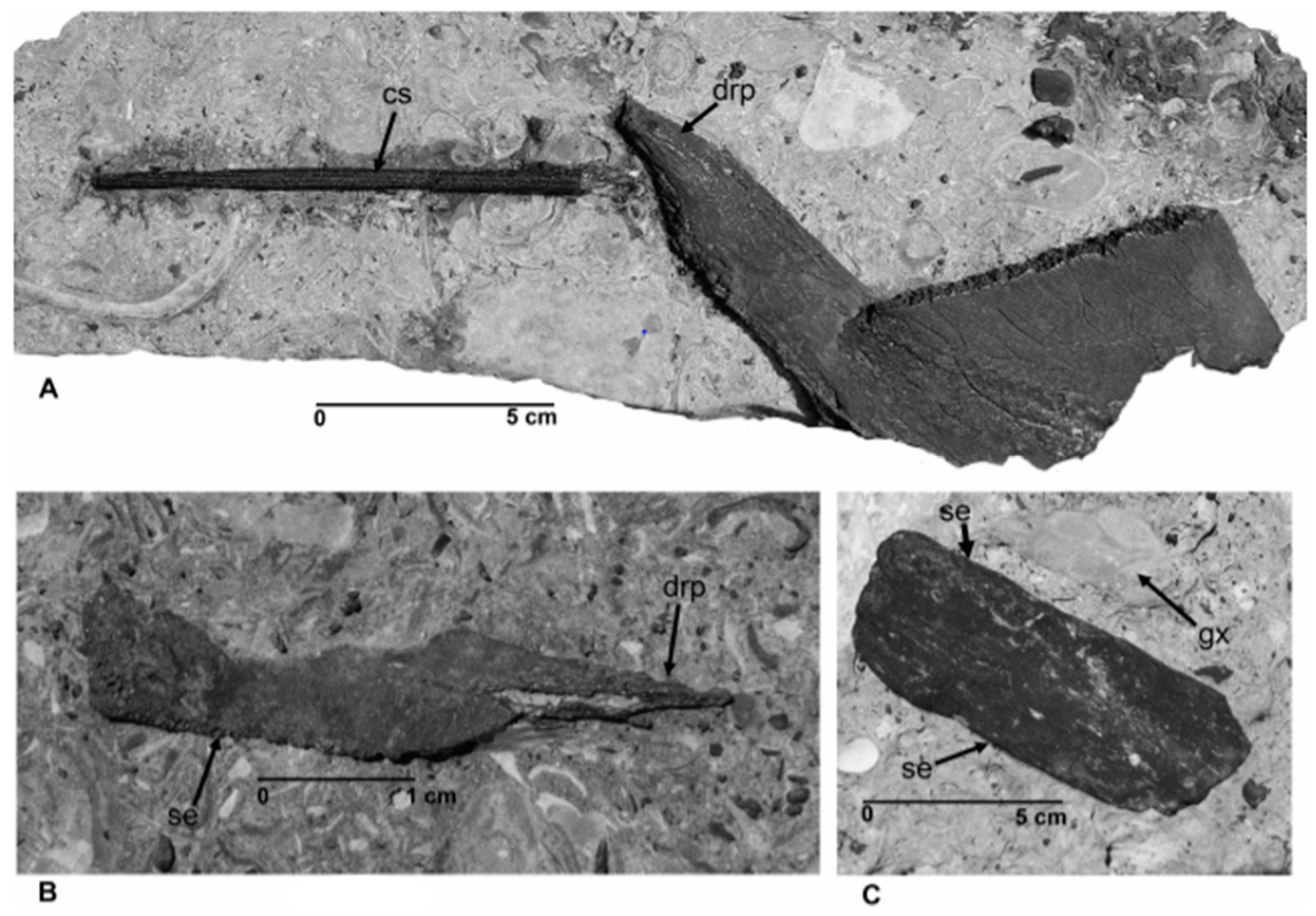
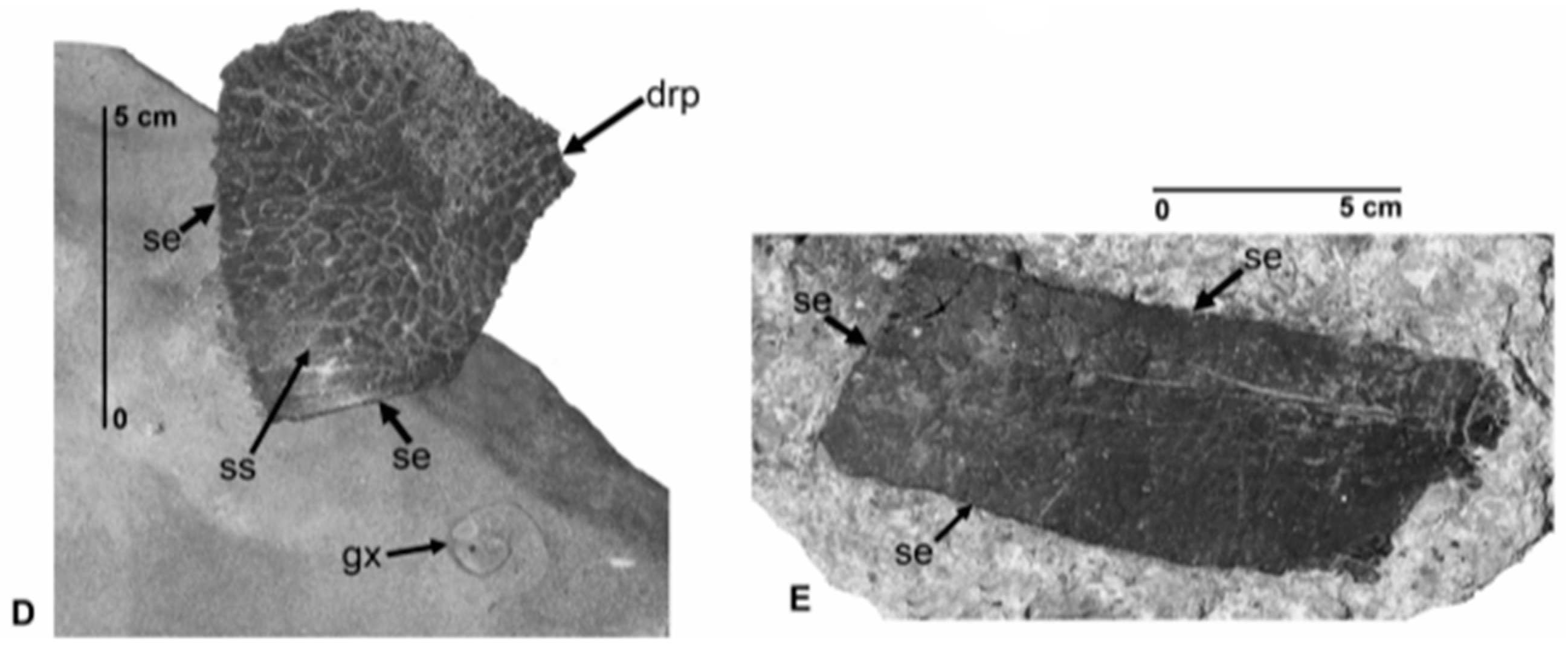
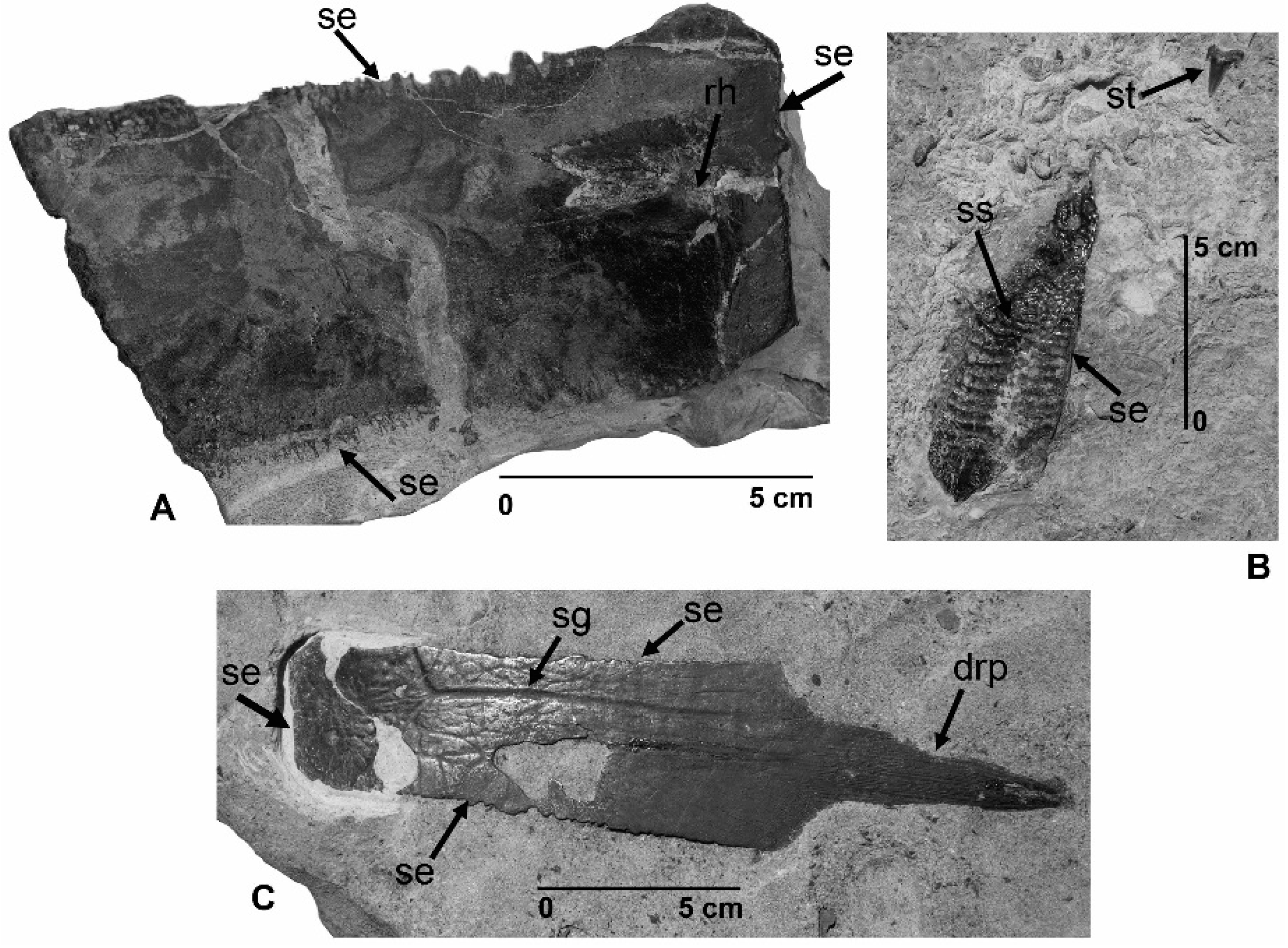
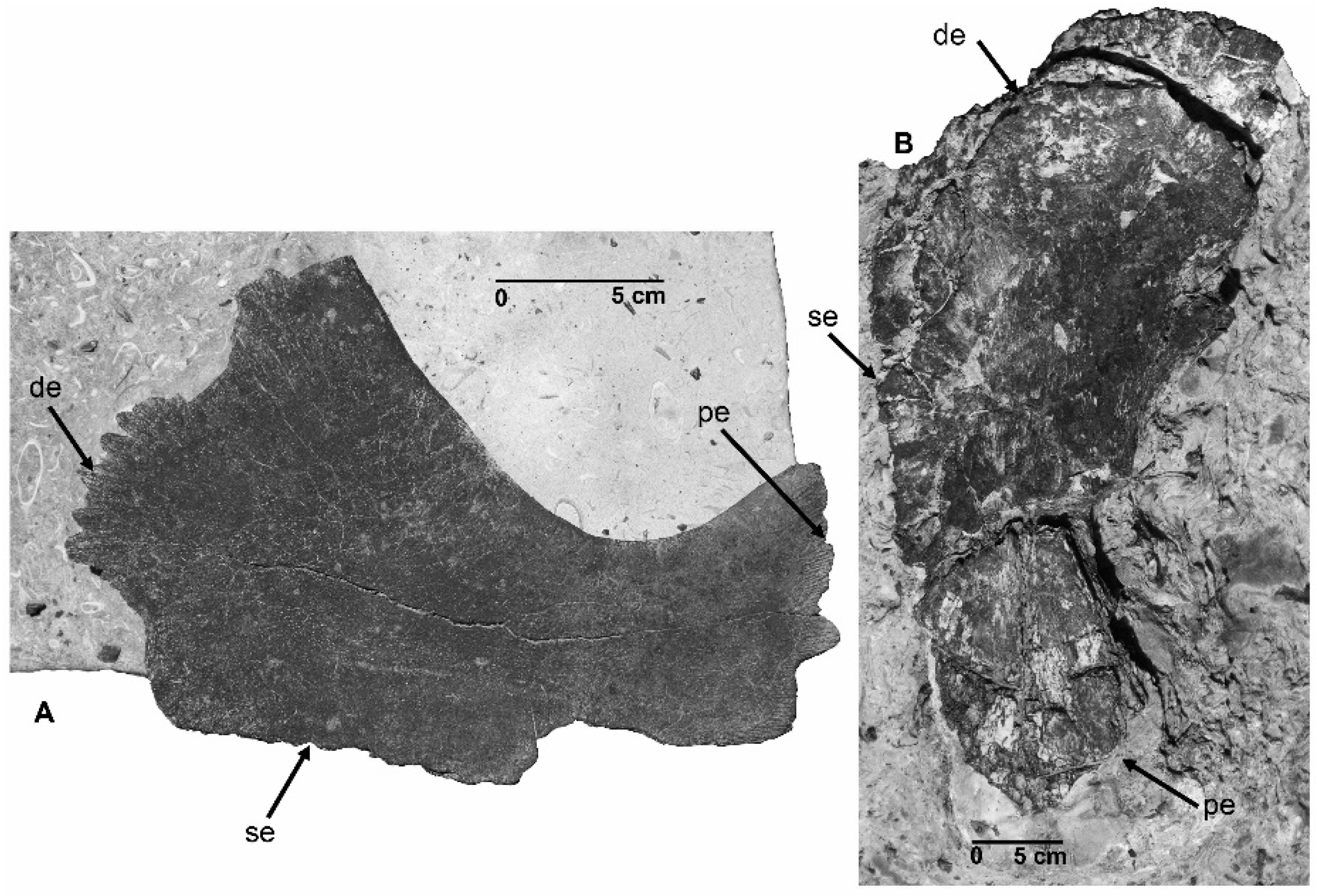
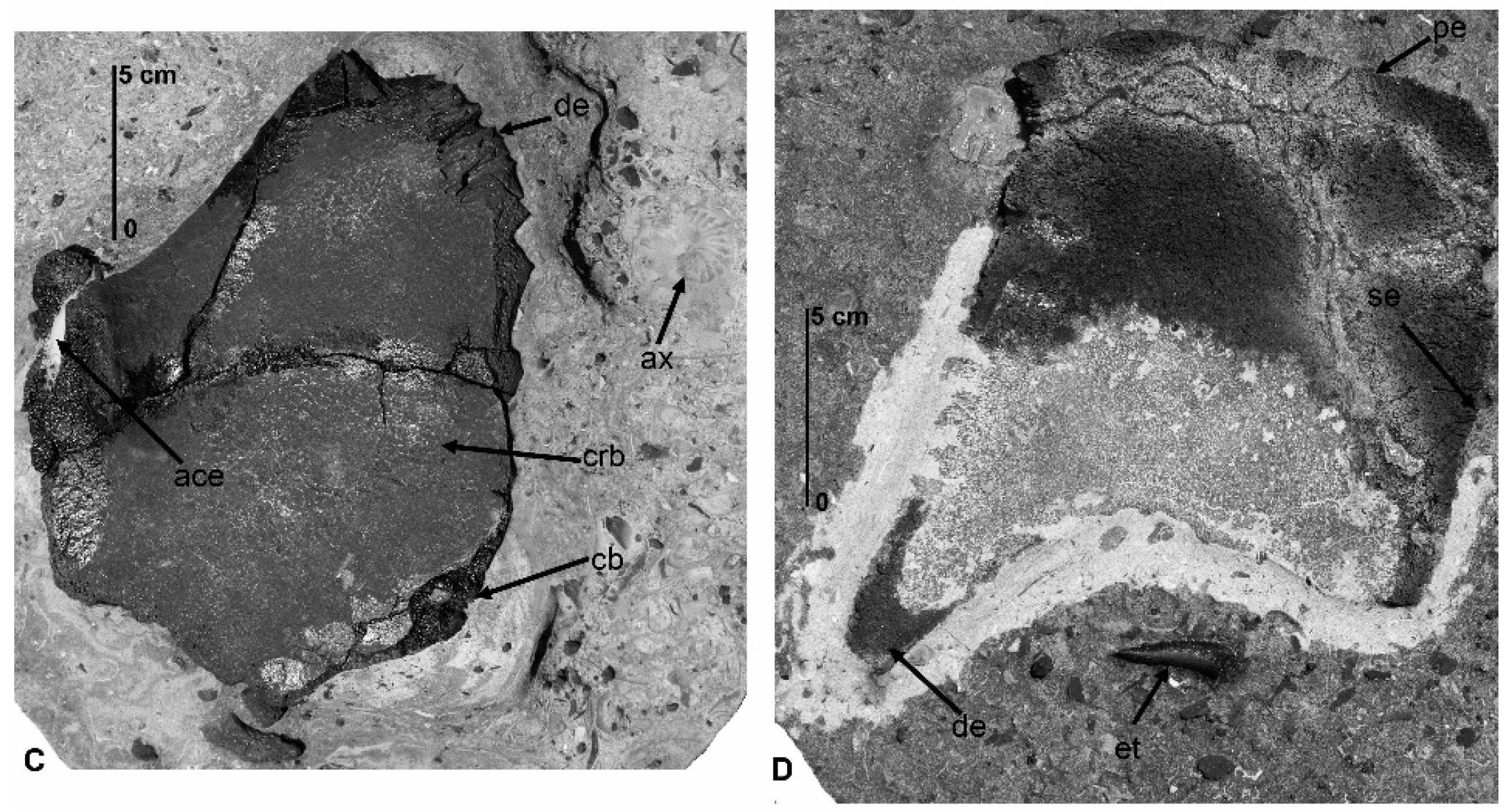
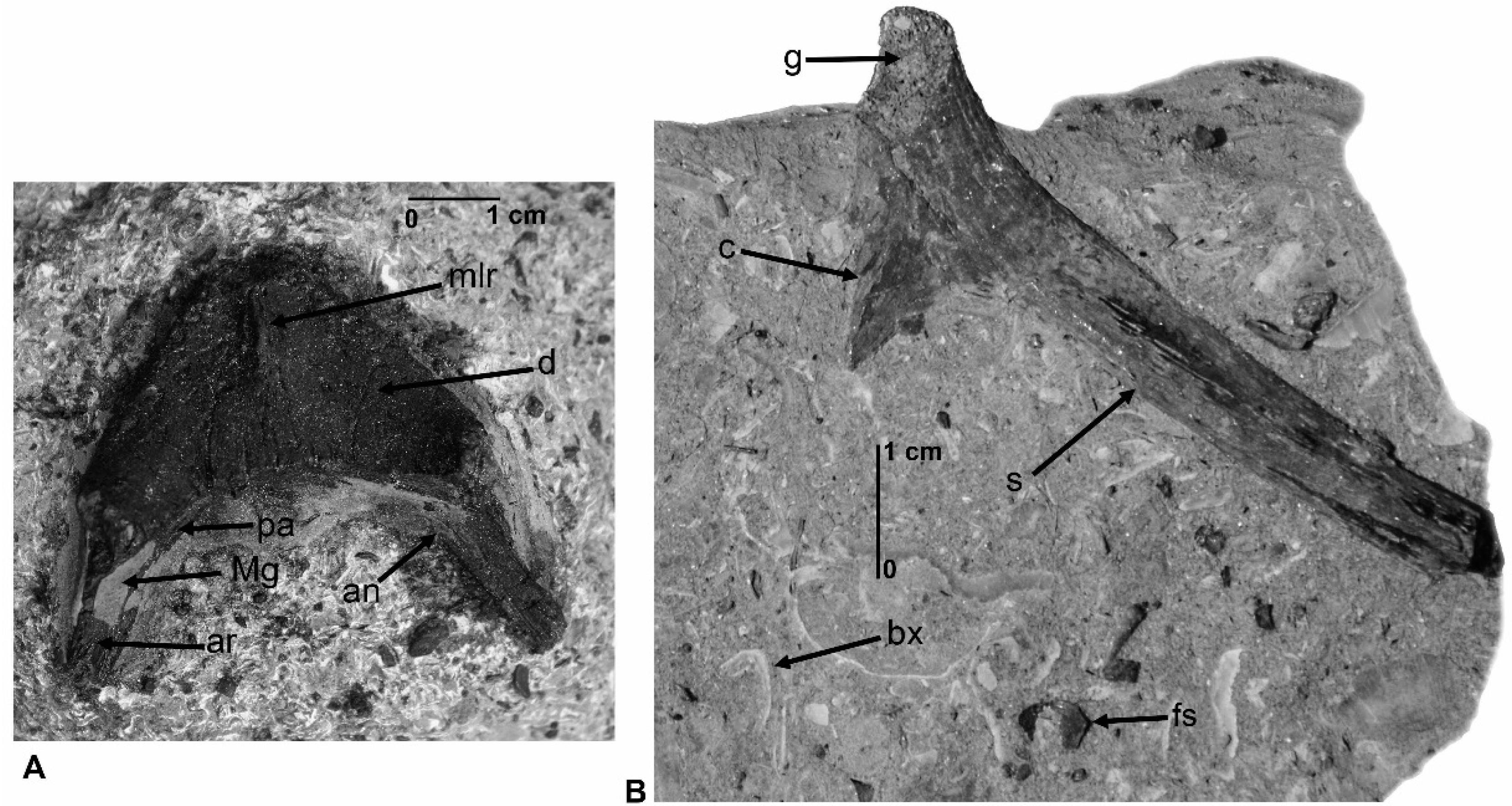
© 2016 by the authors; licensee MDPI, Basel, Switzerland. This article is an open access article distributed under the terms and conditions of the Creative Commons Attribution (CC-BY) license (http://creativecommons.org/licenses/by/4.0/).
Share and Cite
Becker, M.A.; Maisch, H.M., IV; Chamberlain, J.A., Jr. Turtles From an Arkadelphia Formation—Midway Group Lag Deposit (Maastrichtian—Paleocene), Hot Spring County, Arkansas, USA. Geosciences 2016, 6, 41. https://doi.org/10.3390/geosciences6030041
Becker MA, Maisch HM IV, Chamberlain JA Jr. Turtles From an Arkadelphia Formation—Midway Group Lag Deposit (Maastrichtian—Paleocene), Hot Spring County, Arkansas, USA. Geosciences. 2016; 6(3):41. https://doi.org/10.3390/geosciences6030041
Chicago/Turabian StyleBecker, Martin A., Harry M. Maisch, IV, and John A. Chamberlain, Jr. 2016. "Turtles From an Arkadelphia Formation—Midway Group Lag Deposit (Maastrichtian—Paleocene), Hot Spring County, Arkansas, USA" Geosciences 6, no. 3: 41. https://doi.org/10.3390/geosciences6030041




